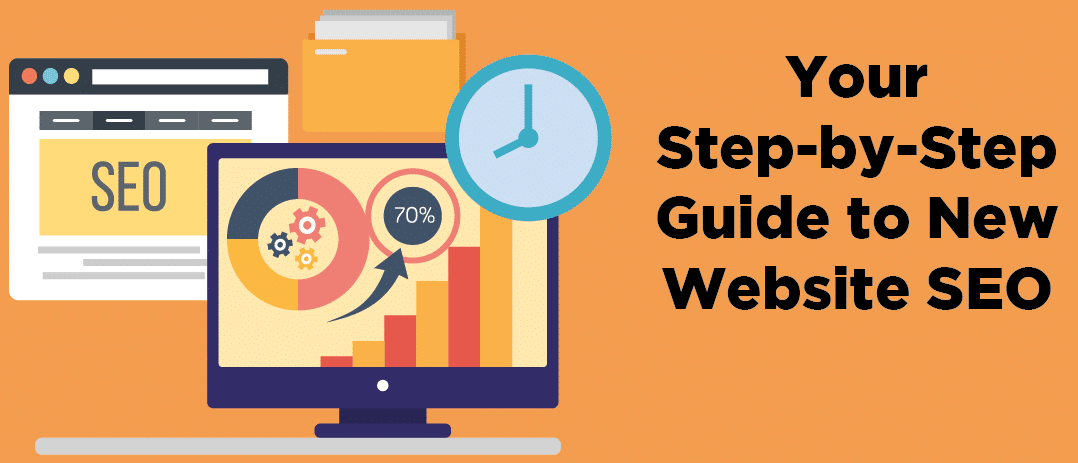Your 7-Step SEO Guide for Websites
Thinking about building a website? Then start thinking about how to do SEO for websites and who can help you with SEO services. Everyone knows the importance of having a website. It’s the equivalent of putting your best foot forward for your business. So, it makes sense that web design should be at the top of your list, but it would be a mistake to underestimate the importance of SEO for your website.
Understanding how SEO works and why it’s so important is crucial to the success of your business. If you don’t get at least the basics of SEO, having a website won’t matter because no one will see it. SEO helps you rank higher in search results and drives traffic to your site. More traffic means more clicks, and more clicks means more sales. Building a solid SEO strategy from the beginning will save you time, energy, and money and will pay off in the long run.
Here’s a basic guideline on how to do SEO for websites, step-by-step.
1. Choose the Right Domain Name
Choosing the right domain name is important because it’s the main element search engines use to understand what your site is about. What you want is a domain name that is relevant to your brand and easy to remember. If you can get a main keyword in there as well, it’s a plus. However, you don’t need to force the issue. If you try too hard with the keywords, you can end up being penalized for it. It can come off as spammy or end up creating confusion instead.
The key is to keep it simple, easy to spell, and related to your brand. Branding gives you credibility and helps customers take you seriously.
And remember, if you choose to buy an old domain name, make sure you do your research on the previous owner and their practices. You don’t want any past negative issues to damage your site’s reputation.
2. Have an Organized, Effective Site Architecture
Your site’s architecture is another key aspect of SEO and part of good web design. How your site is structured matters when it comes to SEO. Ideally you want a structure that’s well organized and easy to navigate so that the information is accessible to both search engines and your customers.
A simple pyramid type structure works best with your homepage at the top, linking to the next most important pages and those linking to subcategories, and so on.
Remember to keep things simple and streamlined because this improves the user’s experience and is precisely what Google is looking for when it comes to SEO.
3. Optimize Your Site Speed
Speaking of improving your user’s experience, optimizing the loading time of each page as well as the overall site speed is key. Be sure to improve the performance of your website by keeping the features that slow down loading time to a minimum. Optimize the images on your site and keep your code (JavaScript and CSS) clean and efficient.
The last thing you want is traffic getting to your site but then visitors leaving your site because your pages take too long to load. Losing visitors and providing a bad experience for the user is one way to ensure you DON’T rank high in search engine results!
You can use Google’s PageSpeed Insights to check your page load times and site speed.
4. Do Proper Keyword Research
A large part of SEO is understanding the importance of proper keyword research. You need to know what words are being used to search for the products or services you’re offering. Without the right keywords, your content will not end up in front of your target audience. You want the right audience at the right stage of the buyer’s intent timeline. The right keywords will bring the right traffic, leads, and sales.
Once you’ve established what your site is about and what your main goal is, there are several tools available to help with keyword suggestions and data about keyword difficulty, search volume, and trends. Marketing Websites offers SEO services that maximize your results with industry leading tools such as Semrush, Google Search Console, and Moz.
5. Optimize Title Tags and Headings
The title tag is what shows up on the search engine results page. It’s the title, in blue, of the site’s listing that links to your website. On your website, it’s what’s in the tab at the top of the browser. And it’s what Google looks at to find out what your site is about.
It’s a good idea to use your target keyword in your title tag and keep it under 50-60 characters since Google will not display more than that. Again, no need to overdo it with the keywords. Your target keyword once is enough.
The headings on your web page are also what helps Google understand what your page is about. So, it’s another place for good SEO practices. Use your target keywords in your headings but in a way that sounds natural and not forced. Don’t try to stuff keywords in if they don’t make sense.
6. Create Unique, Effective Meta Descriptions
Meta descriptions are what show up under the title in the search results. And although they don’t directly affect ranking, they do influence click-through-rate. Creating unique meta descriptions that provide a clear, concise description of your page, include target keywords, and match search intent will encourage visitors to click on your site. Make sure to keep it under 160 characters.
7. Focus on Link Building
Link building is a big factor for ranking high in search results. Backlinks essentially add credibility to your site. The general rule is that a higher number of backlinks tends to increase your ranking because it signals to Google that your site is serious and has merit.
However, keep in mind that not all backlinks are good. You should focus on building high-quality backlinks by creating high-quality, link-worthy content. And remove harmful backlinks regularly.
SEO Services for Success
So, remember, if you’re thinking of building a website, don’t underestimate the value of SEO and use these SEO services for success!




